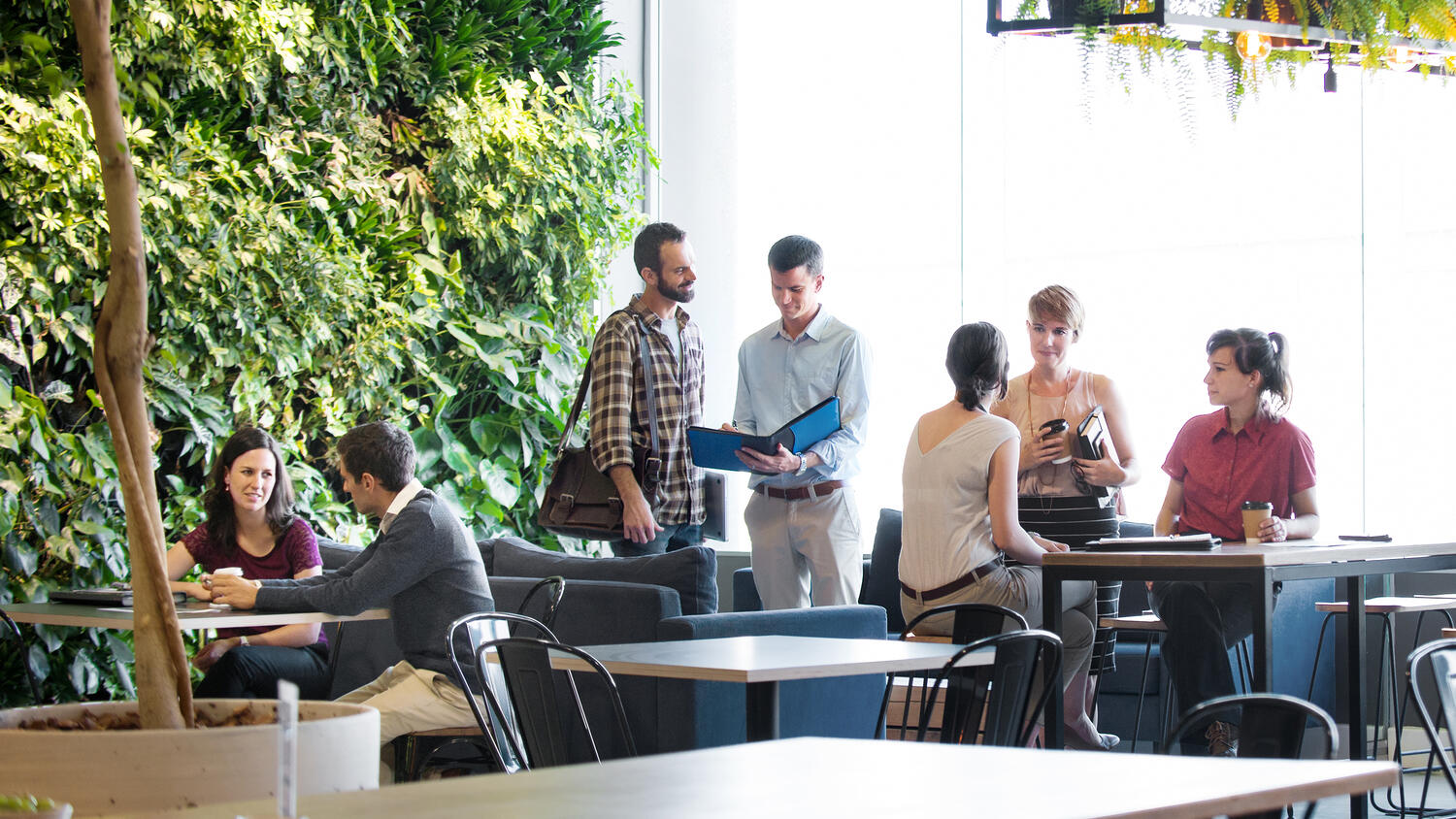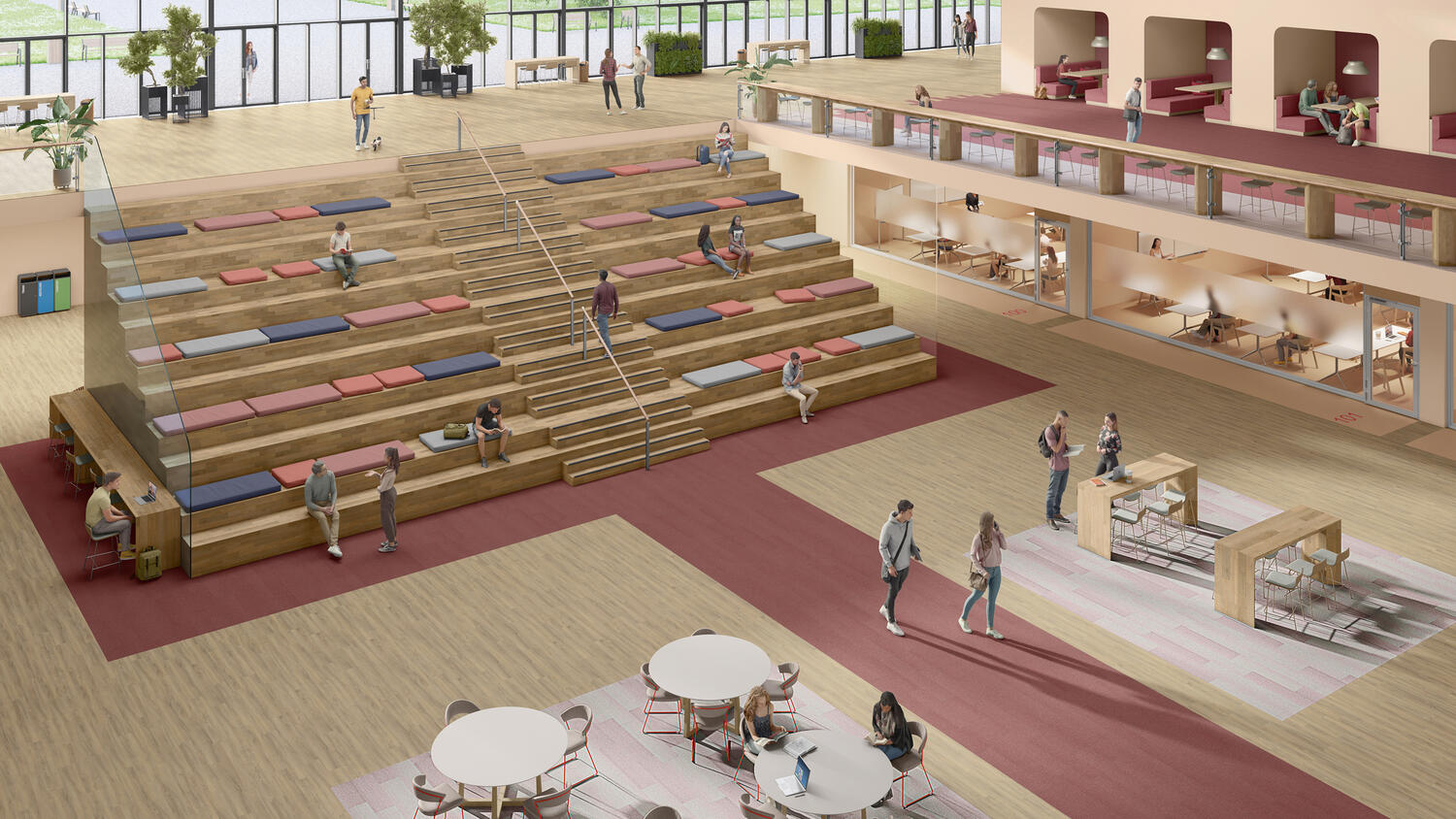
Promoting Inclusive Schools
Promoting accessibility and inclusion
An inclusive school must be designed for all students, regardless of background, ability or neurotype. It means providing a variety of spaces that ensure students with disabilities have access to the same educational opportunities as their peers.
And because the importance of environment in learning is now well established, designing an inclusive and welcoming educational building will promote access and well-being for all students. This can be particularly true for neurodivergent people, including autistic students.
240 million children
live with disabilities in the world. Half of them are unable to attend school due to the lack of adapted structures. (Source: Unicef)
1/100 autistic children
worldwide. Autism prevalence has increased by 24% since 2000. (Source: World Health Organisation)
19 million children
under the age of 15 have a visual impairment that impacts learning. (Source: World Health Organisation)
Assist wayfinding
Enhancing wayfinding can help students and staff to navigate educational buildings or campuses more easily, reducing confusion and stress. By implementing the following strategies, schools can enhance wayfinding and create a more welcoming, accessible and inclusive environment for all.
- Use signage
The first tip is to use clear and consistent signage on walls and floors. Floor and wall craft services can help create directional signs.
- Colours and patterns
The use of colours and patterns can help people navigate more easily throughout the school. Make sure they are easy to distinguish by using the correct LRV contrast.
- Tactile warning floor tiles
Warning tiles and tactile strips can also be used in particular areas, for example stairs, but also to help visually impaired students to navigate entrances and corridors.
Enhance traffic flow
Smooth traffic flow can be difficult in large buildings with many users trying to circulate simultaneously, for example between classes.
There are some important suggestions to keep in mind:
- Designate separate lanes and establish a one-way system using floor markings or signs. This can help students to navigate the corridors more easily and prevent bottlenecks. This kind of attention can be particularly appreciated by ASD students.
- The risk of falling may also be considered, especially in areas prone to water and viscous-liquid spillages. The right flooring choices will be driven by the likelihood and extent of spillages.
Improve visual perception
Perception of the environment is a key element to help students feel good at school, especially neurodivergent pupils.
This is why acoustics, natural light, colours and contrasts are all important criteria to consider when designing buildings that promote inclusive education.
- Colour contrasts
Colour contrast is key to helping people, especially those with visual impairments. It allows them to identify doors, furniture or changes in floor level, enabling students to perceive their surroundings more easily and leading to fewer injuries. Light Reflectance Value (LRV) is useful to obtain the right contrast.
- Colour choice
The choice of colours may be done according to the users of the facility, their age and what they will use the different spaces for. This will also help them to perceive their environment correctly and adapt to their surroundings more easily.
- Natural light
Natural light provides a calming atmosphere, reduces glare and eyestrain, and provides a stimulating and dynamic atmosphere for all.
Autism-friendly design

Inclusion of autistic children at school requires careful consideration and attention to the built environment. Autistic children have specific sensory needs and may face challenges in relating with others, which can make it difficult for them to be fully integrated in traditional school environments.
However, with the attention and knowledge, adapting educational buildings for these special needs can contribute heavily towards their inclusion in the education system.
This is often “just” a question of implementing universal design principles in the classroom and throughout the school.
Recommended floors for inclusive education
Tarkett's multi-material range is carefully thought out to support you in designing inclusive schools, with a variety of materials, features, and colours suited to particular usages and requirements.
Tarkett Lino Loose Lay
Bio-based linoleum flooring - Loose lay installation, no glue.
ProtectWall
High-performance vinyl wall covering that protects against impacts, shocks, scratches.
Tapiflex Stairs
Cost-effective, resistant and accoustic solution for stairs, to ensure optimal safety.

